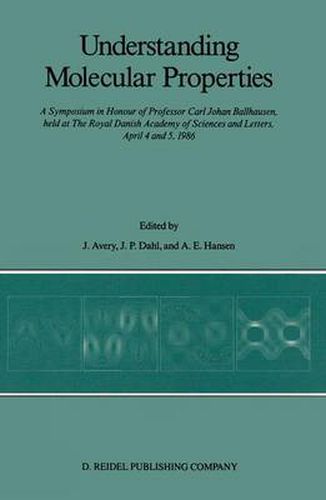Readings Newsletter
Become a Readings Member to make your shopping experience even easier.
Sign in or sign up for free!
You’re not far away from qualifying for FREE standard shipping within Australia
You’ve qualified for FREE standard shipping within Australia
The cart is loading…






This title is printed to order. This book may have been self-published. If so, we cannot guarantee the quality of the content. In the main most books will have gone through the editing process however some may not. We therefore suggest that you be aware of this before ordering this book. If in doubt check either the author or publisher’s details as we are unable to accept any returns unless they are faulty. Please contact us if you have any questions.
The Theory of Atomic Spectra , surrrrnanzlllg all that was then known about the quantum theory of free atoms; and in 1961, J.S. Griffith published The Theory of Transition Metal Ions , in which he combined the ideas in Condon and Shortley’s book with those of Bethe, Schlapp, Penney and Van Vleck. All this work, however, was done by physicists, and the results were reported in a way which was more accessable to physicists than to chemists. In the meantime, Carl J. Ballhausen had been studying quantum theory with W. Moffitt at Harvard; and in 1962 (almost simultaneously with Griffith) he published his extremely important book, Introduction to Ligand Field Theory . This influential book was written from the standpoint of a chemist, and it became the standard work from which chemists learned the quantum theory of transition metal complexes. While it treated in detail the group theoretical aspects of crystal field theory, Carl J. Ballhausen’s book also emphasized the limitations of the theory. As he pointed out, it is often not sufficient to treat the central metal ion as free (apart from the influence of the charges on the surrounding ligands): - In many cases hybridization of metal and ligand orbitals is significant. Thus, in general. a molecular orbital treatment is needed to describe transition metal complexes. However, much of the group theory developed In connection with crystal field theory can also be used in the molecular orbital treatment.
$9.00 standard shipping within Australia
FREE standard shipping within Australia for orders over $100.00
Express & International shipping calculated at checkout
This title is printed to order. This book may have been self-published. If so, we cannot guarantee the quality of the content. In the main most books will have gone through the editing process however some may not. We therefore suggest that you be aware of this before ordering this book. If in doubt check either the author or publisher’s details as we are unable to accept any returns unless they are faulty. Please contact us if you have any questions.
The Theory of Atomic Spectra , surrrrnanzlllg all that was then known about the quantum theory of free atoms; and in 1961, J.S. Griffith published The Theory of Transition Metal Ions , in which he combined the ideas in Condon and Shortley’s book with those of Bethe, Schlapp, Penney and Van Vleck. All this work, however, was done by physicists, and the results were reported in a way which was more accessable to physicists than to chemists. In the meantime, Carl J. Ballhausen had been studying quantum theory with W. Moffitt at Harvard; and in 1962 (almost simultaneously with Griffith) he published his extremely important book, Introduction to Ligand Field Theory . This influential book was written from the standpoint of a chemist, and it became the standard work from which chemists learned the quantum theory of transition metal complexes. While it treated in detail the group theoretical aspects of crystal field theory, Carl J. Ballhausen’s book also emphasized the limitations of the theory. As he pointed out, it is often not sufficient to treat the central metal ion as free (apart from the influence of the charges on the surrounding ligands): - In many cases hybridization of metal and ligand orbitals is significant. Thus, in general. a molecular orbital treatment is needed to describe transition metal complexes. However, much of the group theory developed In connection with crystal field theory can also be used in the molecular orbital treatment.